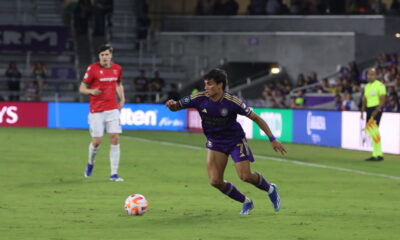Orlando City
Orlando City vs. the New England Revolution: Player Grades and Man of the Match
How did your favorite Lions perform in Orlando’s 3-2 home win over the New England Revolution?
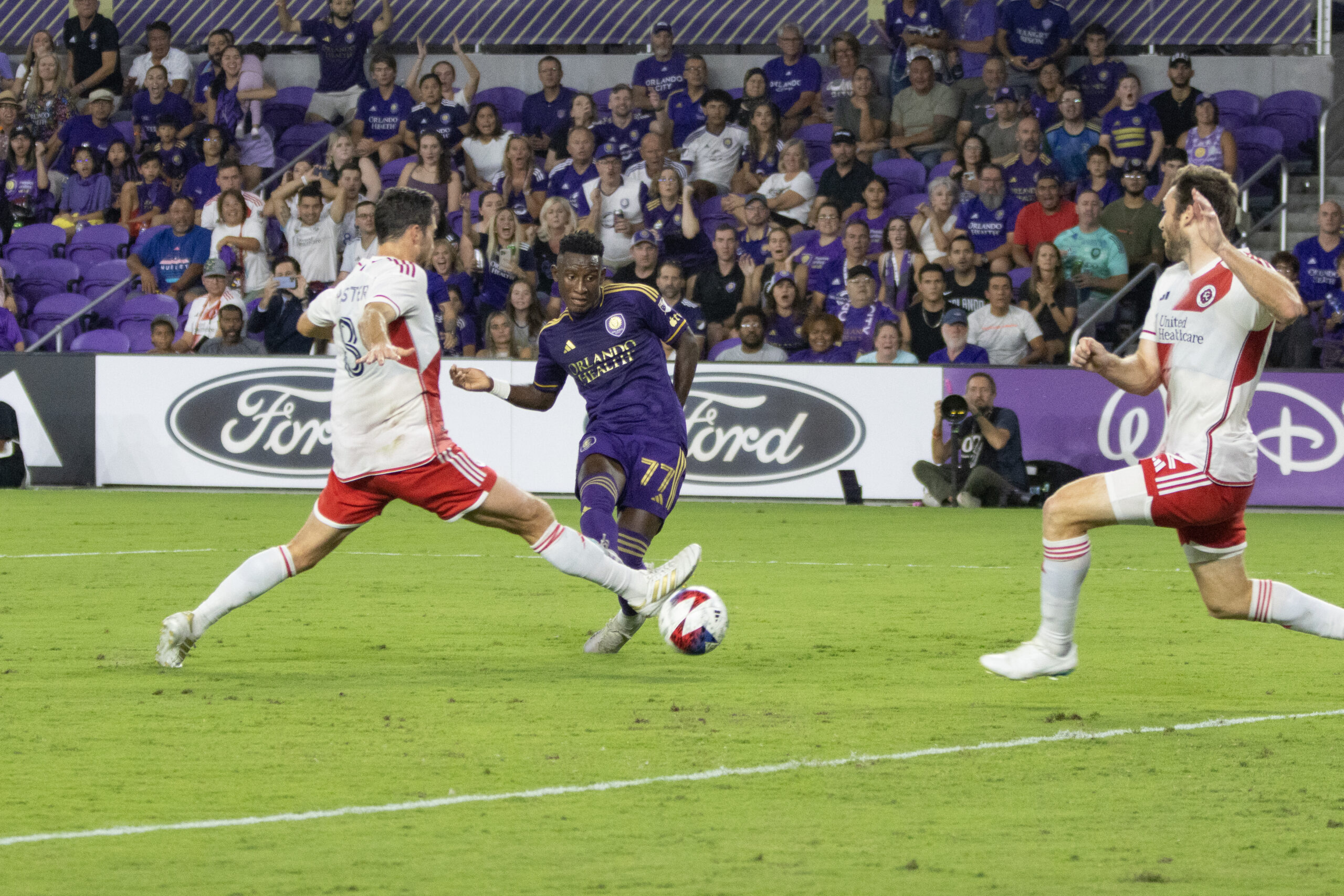
Orlando City finished off its home campaign with an exciting 3-2 victory against a New England Revolution squad that has too often enjoyed joyful results at the expense of the Lions. The Revs came into town five points behind Orlando City but ended the night eight points adrift of the Lions, who secured the second seed in the postseason — the highest finish in club history.
Here’s how I saw each individual performance in Orlando’s win over the former poster boys of the Eastern Conference.
Starters
GK, Pedro Gallese, 5.5 — This is a rare departure from the regular match grade for El Pulpo. The Peruvian number one uncharacteristically spilled a goal from distance, allowing the Revolution a sliver of hope before giving up a second on a redirection that he could not do about about in the final seconds of stoppage time. Neither goal ultimately affected the outcome of the game, but they certainly could have if Orlando hadn’t outscored its competition. Gallese did well to deny Carles Gil from point-blank range with an acrobatic save before New England found its garbage time goal. He completed 62.9% of his 35 passes, including only one accurate long ball out of 14 chances.
D, Rafael Santos, 7 — The Brazilian left back put in another solid performance. Santos recorded 62 touches on the night and completed 95% of his 40 passes. He logged two key passes and was accurate on three of his four long balls. On the offensive side of the pitch, Santos logged four shots, which all missed the mark but did include a howitzer that just missed the top of the crossbar. Santos also recorded one successful dribble. His best moment of the night came when he earned the assist setting up Ivan Angulo for a goal giving Orlando a 3-1 lead.
D, Robin Jansson, 6.5 — The heart and soul of the Orlando back line put in another strong effort against numerous efforts from New England especially in the beginning of the match. Jansson completed 86.9% of his 61 passes and recorded 65 touches on the night. He also completed five of his 10 long ball attempts. On defense, Jansson was credited with two clearances, one interception, and an aerial duel won but did not record a tackle on the night. He picked up two fouls and ultimately both goals that New England scored were of the fluky nature and the center back could do little to stop either one.
D, Rodrigo Schlegel, 6.5 — We talk at length about what a luxury it is to have such a quality third center back on the roster and Schlegel has done admirably filling in as Antonio Carlos continues to work his way back into the lineup. Schlegel had 56 touches on the night, and completed 91.3% of his 46 passes and one of three long ball attempts. Schlegel blocked two shots and recorded two clearances while committing one foul. City fans also got a rare Schlegel shot as the defensemen recorded one shot on the night which failed to find the target.
D, Dagur Dan Thorhallsson, 7.5 — Thorhallsson found himself back in the starting lineup after coming off the bench during the midweek fixture. The converted defender truly opens up options on the right side of the field that were lacking earlier in the season. The Icelandic international enjoyed a team-high 76 touches and completed 94.7% of his 57 passes. Thorhallsson filled the defensive stat sheet by winning two aerial duels and logging one interception, one blocked shot, and one successful tackle, as well as a team-high three clearances. He completed one of two crosses and also logged a key pass. Offensively, Thorhallsson completed two successful dribbles, and he picked up the first assist of the game on a cross that found Duncan McGuire. He also logged two shots which were not on target.
MF, Cesar Araujo, 7 — Araujo directed traffic throughout the match and did a solid job of keeping New England out of rhythm offensively — in the second half especially. Araujo recorded one successful aerial, and also recorded a shot during the match. He completed 94% of his 50 passes on the night and two key passes while successfully completing three long balls on four attempts. Araujo chipped in with two interceptions and one tackle while suffering four fouls.
MF, Wilder Cartagena, 7 — Cartagena and Araujo just work seamlessly together in the defensive midfield. Against the Revs, Cartagena completed 94.4% of his 54 passes, including both of his long ball attempts. Defensively, Cartagena picked up a team-high four tackles with one interception and a clearance. Cartagena also committed a team-high three fouls on the night. Offensively, the Peruvian put his lone shot attempt on target.
MF, Ivan Angulo, 8 (MotM) — Angulo may have just enjoyed his best game as a Lion. The Colombian was all over the pitch and made his presence known throughout the match. Angulo completed 81.5% of his 27 passes and logged three key passes on the night. He used his speed to frequently get in behind the New England back line and successful completed one of his three crossing attempts. The lone successful cross led to the second goal for Orlando as Angulo crossed the ball to the far end of the box to Facundo Torres in the 37th minute, earning an assist. Angulo later found the goal himself, scoring just before halftime on a strong pass from Santos. He also completed one successful dribble and chipped in with two tackles on the night.
MF, Mauricio Pereyra, 7 — The captain enjoyed a bounce-back performance for a mundane outing in Nashville. Pereyra completed 93.3% of his 45 passes and was successful on four of six long balls and one of four crosses. Pereyra was credited with a team-high five key passes as he often found himself unlocking the New England defense. He attempted one shot, which was blocked just in front of goal by the Revs. Defensively, the captain contributed two tackles. Pereyra was subbed off in the 66th minute for Junior Urso.
MF, Facundo Torres, 7.5— Torres has lived up to the lofty expectations of fans and pundits throughout the second half of the season and Saturday’s performance continued his great run of form. Torres completed 92.3% of his 26 passes, including one successful cross on two attempts, while failing to complete his lone long ball attempt. Torres added to his team-high goal total on the season by smashing a shot past former Orlando City keeper Earl Edwards Jr. in the 37th minute to put Orlando up 2-0. Both of Torres’ shot attempts on the night were on target. After three matches in eight days, Torres was fortunate to get some much-needed rest after a solid 66-minute shift.
F, Duncan McGuire, 7.5 — At this point in the season, there is not a single defensive center back pairing who should be surprised by McGuire’s presence on the field and yet the rookie continues to find space to score. McGuire opened up the scoring in the 31st minute, finding a quality cross from Thorhallsson and calmly heading it into the back of the net. It was McGuire’s 11th goal on the season. McGuire won two aerial duels and completed 70% of his 10 passes. Defensively, McGuire chipped in with a clearance. He was part of the triple sub in the 66th minute, when he was replaced by Ramiro Enrique.
Substitutes
MF, Martin Ojeda (66′), 6.5 — Ojeda came off the bench with Orlando up 3-1 and did his part in keeping Orlando City on the front foot. Ojeda won one aerial duel and completed 90% of his 10 passes. He completed both long ball attempts and two of his five cross attempts. In a little over a half hour the DP also racked up four key passes. Defensively, he contributed two clearances. Ojeda attempted two shots while on the field but both were off the mark.
F, Ramiro Enrique (66′), 6 — Enrique came on to provide energy. He completed all eight of his passing attempts and three dribbles, and he attempted three shots, which were all off target.
MF, Junior Urso (66′), 6 — The Bear came on to replace Pereyra and provide some additional defensive presence as Orlando looked to close out the match. He completed all of his 17 passing attempts and logged two tackles and a clearance. In limited time, Urso also attempted two shots, which failed to find the mark, and completed one dribble.
MF, Gaston Gonzalez (85′), N/A — The winger continues to work his way back into game shape and got a quick run-out to close out the match. He completed all four of his passes but was unsuccessful in his lone crossing attempt.
MF, Felipe (85′), N/A — Felipe replaced Araujo in the defensive midfield and racked up a significant amount of touches and passes in limited minutes. He was credited with 20 touches and comleted all 19 of his passes. Defensively, Felipe failed to register any stats.
That’s how I saw the individual performances by the Lions. Let me know where you agree and disagree in the comments below and make sure to vote for your Man of the Match in our poll below.
Orlando City
Examining the Sustainability of Ramiro Enrique’s Scoring Explosion
Is Ramiro Enrique’s scoring outburst sustainable, or is a regression to the mean on the horizon?
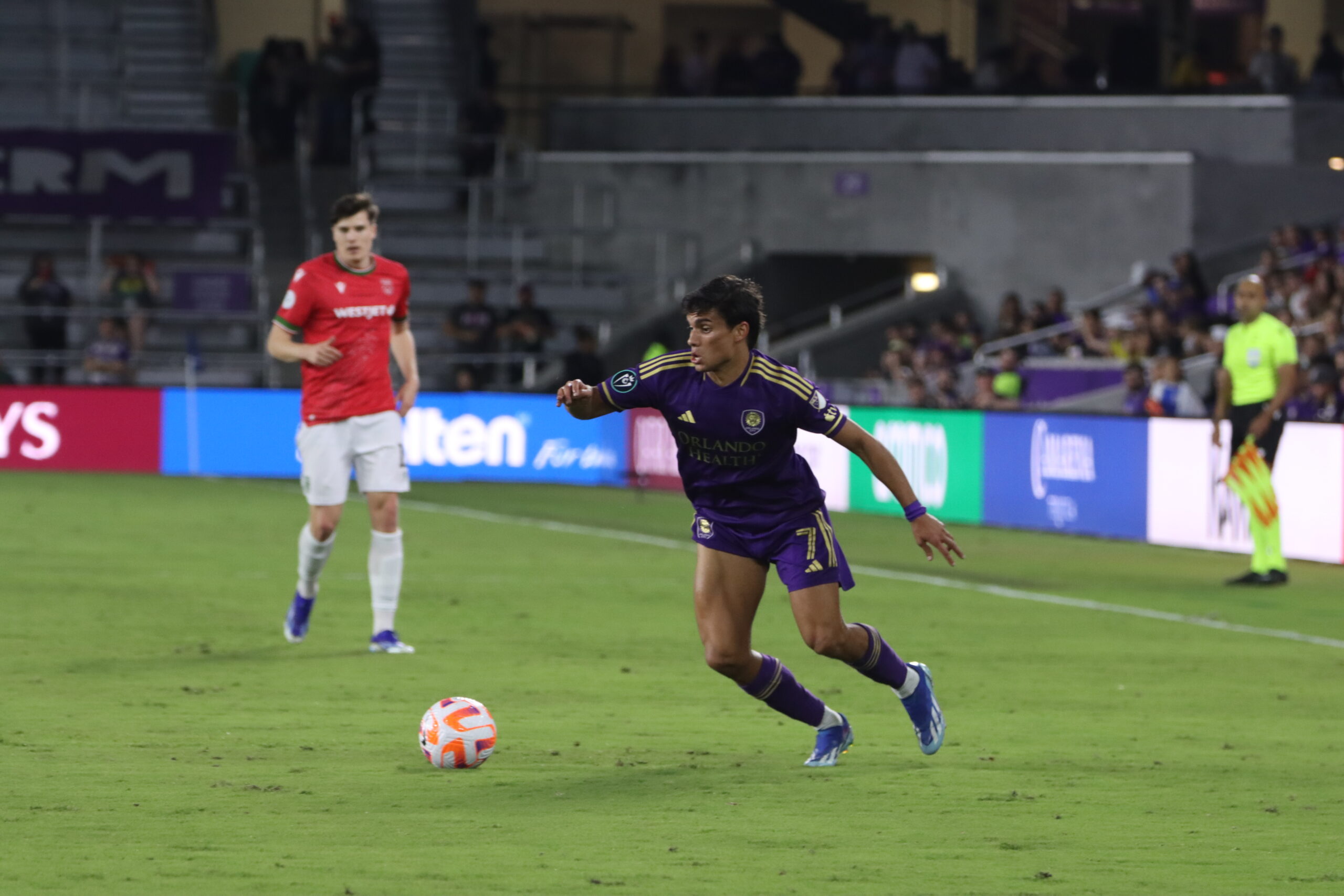
Since Orlando City’s 5-0 thumping of D.C. United back on July 6, Ramiro Enrique has tapped into a red-hot vein of form. He’s got four goals in four games, matching his scoring output from the entirety of the 2023 season, and doing so in four matches and 245 minutes, as compared to 30 matches and 1,019 minutes last year. That brings us to the big question: is this sort of output sustainable?
We’ll start by looking at the expected goals on each of his four tallies. While xG isn’t a perfect statistic, it provides a fairly good measure of how good a chance is. To get a clearer picture, we’ll also take a look at each goal to help gauge how difficult the chance is.
Against D.C. United, Enrique latched onto a flicked-on header from a corner kick and used a header of his own to score the Lions’ fifth and final goal of the night. That strike had an xG of 0.1. In truth, that number seems a bit low to me, as once Enrique’s in front of his defender, he has the whole net to aim at, and the ball comes in at a great height for him to get his head on it. He makes no mistake and sticks it into the side netting, where the goalkeeper has no hope of reaching it.
Against the New England Revolution, the Argentine again scored from a corner, sneaking in front of goalkeeper Aljaz Ivacic and flicking the ball past him before he could collect Cesar Araujo’s header. His second goal of the season had an xG of 0.4. That number seems more reasonable to me. Once he does the hard work of losing his marker and getting across Ivacic, the goalkeeper is helpless to stop any ball that isn’t coming straight at him, and it’s a good finish.
Against Nashville, he collected a pass from Ivan Angulo a few yards outside of the six-yard box and blasted it off the crossbar and in. The tight angle from which he scored means the xG of 0.04 isn’t too surprising. Once again, Enrique managed to lose his defender and got himself into a really nice area of open space. The finish is outstanding, but it wouldn’t have been surprising to see a save or shot off target from this angle.
His fourth goal of the year had elements of skill and luck, as he redirected Martin Ojeda’s shot against NYCFC. The effort from Ojeda took a deflection off Enrique that caught the goalkeeper leaning the wrong way and had enough pace to carry it into the net, for an xG of 0.11. Again, I’m surprised the number is as high as it is. That’s probably due to the deflection happening in the box and leaving Matt Freese next to no time to react. While it was a clever touch to redirect it, there was also a good deal of luck involved.
Those totals add up to 0.65. In other words, Enrique would be estimated to score 0.65 goals off those chances (or one, rounding up, as there are no fractions of goals), and he instead bagged four. There are a couple ways you can view that. The optimist would say that he’s simply a good finisher and has been making the most of the chances that have come his way, even when they aren’t very good ones. The pessimist would say that him converting low percentage chances at this rate isn’t sustainable, and he’s due to regress back to the mean soon.
We can also look at the bigger picture of his statistics up to this point in the year. Across 11 games and 483 minutes, Enrique has taken 18 shots, put nine of them on target, and scored from four of those. He’s also got a season xG of 3.52, which is pretty much in line with his goal total of four, although he’s slightly outperforming it. That isn’t a bad thing though, as the best strikers score difficult chances too, not just the easy ones. Cristian Arango, Christian Benteke, and Denis Bouanga are the top three scorers in the league, and Bouanga is the only one not outperforming his xG (17.68 xG compared to 16 goals).
In my opinion, the truth of Enrique’s case lies somewhere in between. He’s put 50% of his shots on target this year, which is a great number, and getting the ball on frame is half the battle in this sport, so that’s an encouraging place to start. Each of his first three goals in 2024 came as a result of getting into space in a dangerous area and making no mistake with his finish once the ball arrived. Against D.C., he did well to get in front of his defender. In New England, he snuck in from the blind side of the defense. And against Nashville, he found space in the box and stayed onside until Angulo was able to find him. That sort of movement and ability to get yourself into dangerous areas is something that can be replicated, even if finishing low-percentage chances like the strikes against Nashville and NYCFC probably isn’t.
If Enrique continues being clever with his movement and finding dangerous spaces, Orlando’s offense has begun to look fluid enough that his teammates will find ways to get him the ball. As long as he keeps getting shots on frame and his finishing stays sharp, it isn’t unreasonable to assume that he’ll grab some more goals this year. It probably won’t be at the rate he’s done so in July, but if nothing else, he should be able to provide some extra firepower to an OCSC attack that has woken up in recent weeks. Keep your fingers crossed, folks. Vamos Orlando!
Lion Links
Lion Links: 7/26/24
Orlando City plays CF Montreal tonight, USWNT wins against Zambia, Marta provides assist in Brazil’s win, and more.
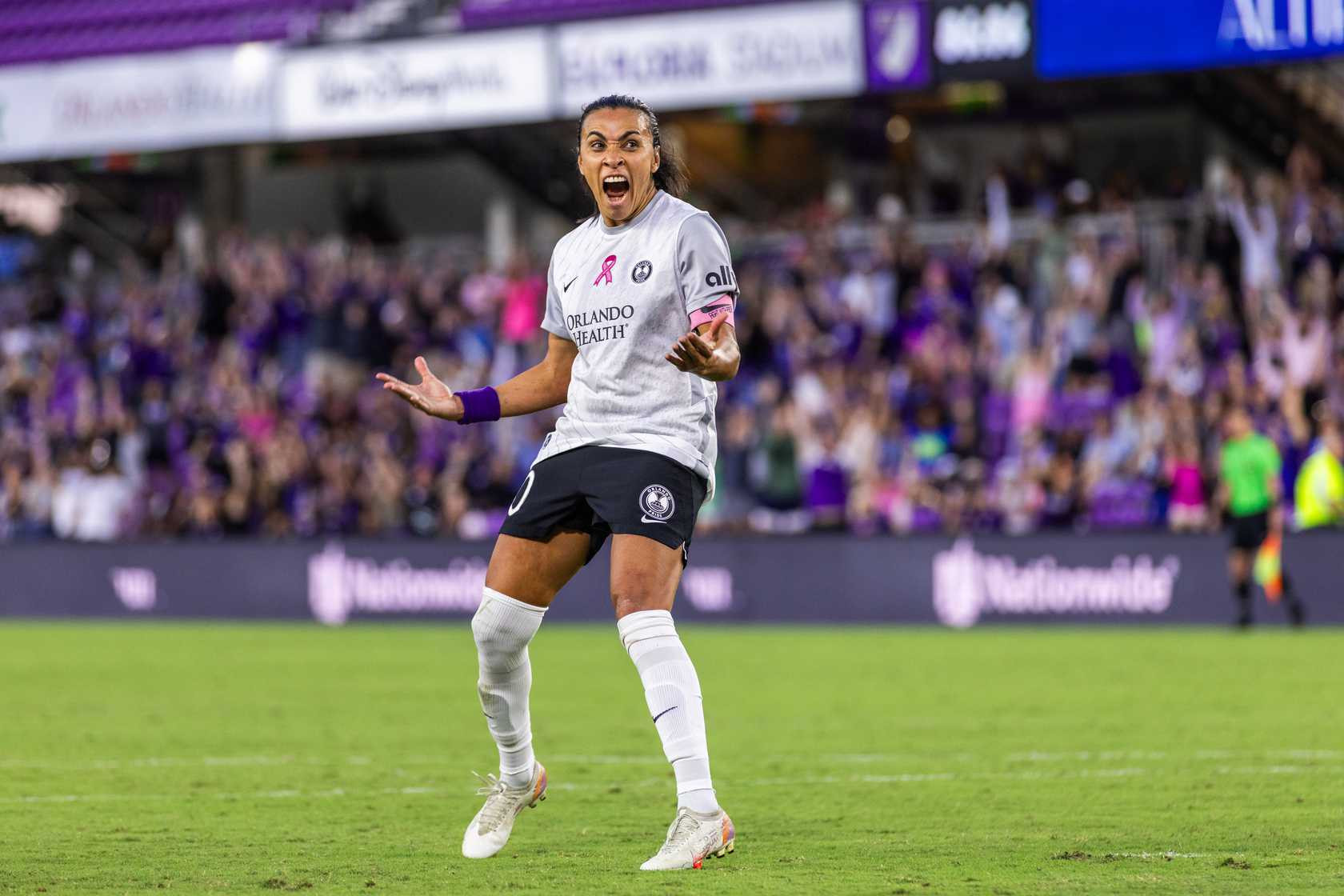
Happy Friday! I hope the work week has gone easy on you as we get ready for a weekend filled to the brim with soccer to enjoy. The Olympic opening ceremony is also today, and I’m interested to see what the organizers in Paris have come up with. But for now, let’s get this Friday started with today’s links!
Orlando City Takes On CF Montreal Tonight
The Leagues Cup kicks off today and Orlando City will host CF Montreal tonight in its first of two group games. The Lions will then take on Atletico de San Luis on Aug. 4. It’s worth noting that these games will go into a penalty shootout if the score remains level after 90 minutes, with the winner of the shootout getting an extra point. The top two teams of each group advance to the next round and Orlando will play the Philadelphia Union, Cruz Azul, or Charlotte FC if it survives the group stage.
USWNT Beats Zambia in Summer Olympic Opener
The United States Women’s National Team started its Olympic campaign with a dominant 3-0 win against Zambia. The USWNT’s attack looked free and dangerous, with Trinity Rodman striking first and Mallory Swanson scoring twice in quick succession to give the USWNT a comfortable lead. Those goals also came before Zambia was reduced to 10 players after a red card to Pauline Zulu. The Orlando Pride’s Barbra Banda and Grace Chanda both started for Zambia, although Chanda was subbed out in the first half when Zambia had to make changes due to the red card.
There is some bad news along with the good for the USWNT though. Jaedyn Shaw missed out on playing in the opener due to a leg injury, and Sophia Smith had to exit in the 42nd minute.
Marta Assists in Brazil’s Olympic Win
The USWNT was far from the only team to win its first game of this year’s Olympics, as there were no draws after the first round of games. Pride star Marta provided the assist on Brazil’s only goal in a 1-0 win over Nigeria. Marta did well to pick out Gabi Nunes from a tough angle, and the striker had a great first touch and strike to put it away. Pride defender Rafaelle helped secure the shutout, with Brazilian goalkeeper Lorena coming up with huge saves as well. Elsewhere in Group C, Spain’s Aitana Bonmati had a goal and an assist in her team’s 2-1 win against Japan.
New Zealand struck first against Canada in Group A, but the Canadians rallied to come back and win 2-1. France scored three goals in the first half and survived a rally from Colombia in the second half to win 3-2. Germany may have had the most impressive win so far, beating a talented Australian side 3-0.
Analyzing New Zealand Ahead of Olympic Clash
The United States Men’s Olympic Soccer Team will aim to bounce back from a loss to France when it faces New Zealand on Saturday. New Zealand beat Guinea in its first game and is coached by Darren Bazeley, who led New Zealand to the knockout stage of the 2023 U-20 World Cup. Minnesota United center back Michael Boxall and Viking FK midfielder Joe Bell are two of New Zealand’s overage players and give the team some stability. Goalkeeper Alex Paulsen, who joined Bournemouth this summer, is capable of coming up with acrobatic saves to give the U.S. fits as well. As for New Zealand’s attack, midfielder Sarpreet Singh and striker Ben Waine are a couple of the dynamic players the U.S. will have to keep in check.
Bev Priestman Removed From Canadian Olympic Team
Canada will have to go the rest of the Olympics without Head Coach Bev Priestman, who was removed from the team by the Canadian Olympic Committee. This decision comes amid a scandal involving spying on New Zealand’s training, which led to Canada Soccer suspending Priestman for the rest of the tournament. Reports have also surfaced that Canada’s men’s and women’s teams have tried to spy on opponents for years, including during the women’s team’s winning campaign in the 2021 Olympics. Only time will tell if Priestman will coach the team after this tournament and if punishments for the team’s actions will be handed out.
Free Kicks
- Orlando City’s Kaleb Harrington received the Spirit of Fair Play Award for his role in the Special Olympics Unified Sports All-Star Game. The East All-Stars were victorious as well, winning 5-0 against the West All-Stars.
- Chicago Red Stars defender Sam Staab was placed on the season-ending injury list after suffering a torn Achilles in the team’s Summer Cup match against NJ/NY Gotham FC.
- FC Cincinnati has signed Chidozie Awaziem from Boavista in Portugal’s top flight to help fill the club’s need at center back due to injuries to Matt Miazga and Nick Hagglund.
- Paraguayan center back David Martínez joined Inter Miami on loan from River Plate. The loan lasts through July of next year and also includes a purchase option.
- San Diego FC signed center back Patrick McNair as its fifth player before taking the field next year. McNair will spend the rest of 2024 on loan with West Brom.
- Minnesota United signed midfielder Joseph Rosales to a new contract that will keep him in Minnesota through 2027, with an option for 2028 as well. The 23-year-old is having a breakout year of sorts for the Loons, recording 10 assists in 21 appearances.
- Paris Saint-Germain is reportedly willing to pay Spanish winger Nico Williams double what Barcelona would pay the 22-year-old in order to sign him.
That’s all I have for you today. I hope you all have a fantastic Friday and rest of your weekend. Enjoy the Olympics!
Orlando City
Orlando City’s 2024 Offensive Blueprint (So Far)
An evaluation of how Orlando City has been trying to score goals in 2024.
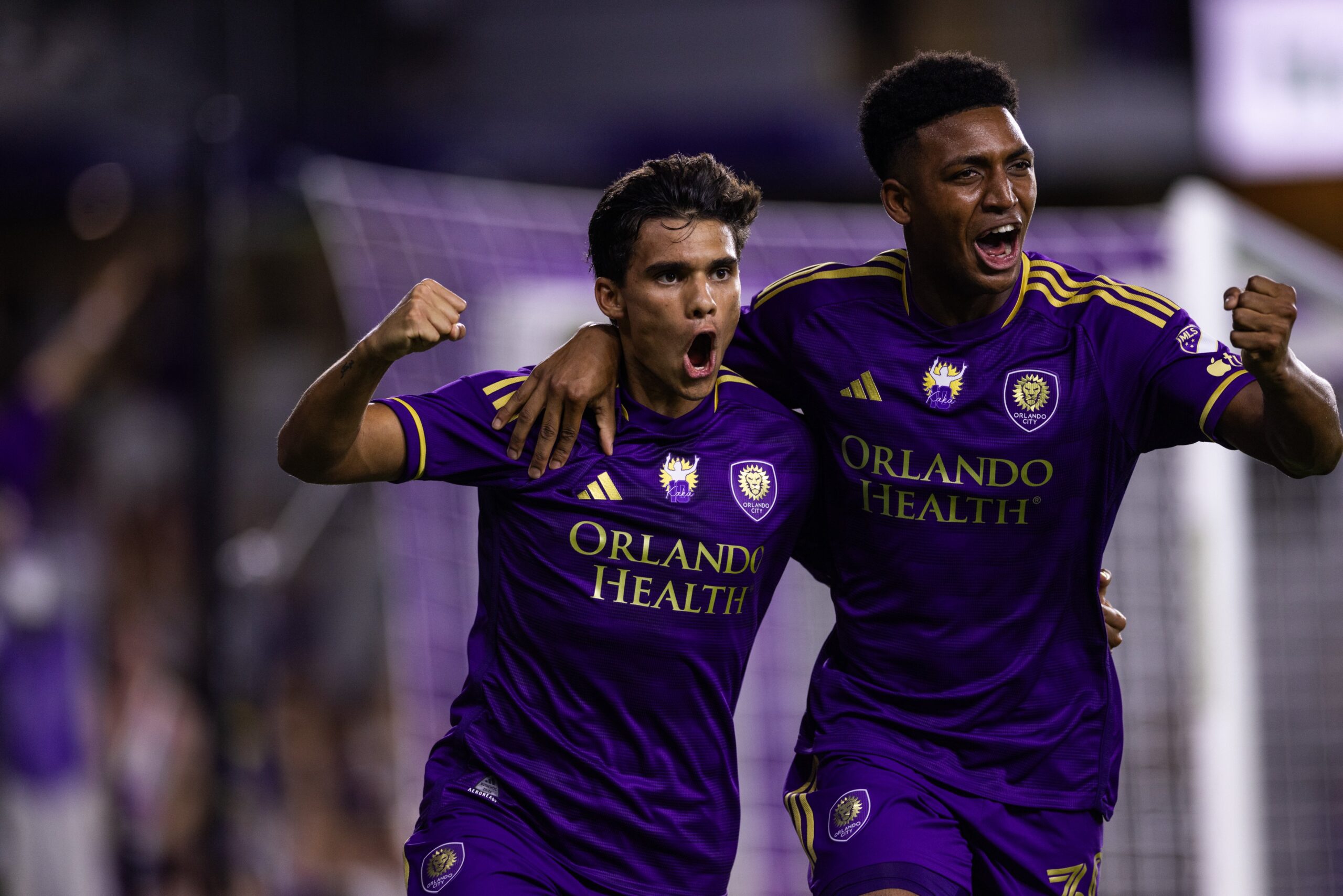
Jay-Z released one of my all-time favorite albums, The Blueprint, in 2001. With apologies to him, and his track on that album called “Girls, Girls, Girls,” what we as fans want are goals, goals, goals, and we want our team to score as many of them as possible. In this article I will explore Orlando City’s attacking style — some might say their attacking…blueprint — thus far this season and evaluate how the Lions have been trying create those goals we do adore.
All right, now that we have pushed the limit on puns and wordplay about that album, let’s look at some numbers related to Orlando City’s offense. First, let’s start with the direction of play, because Orlando City has a very clear plan of attack in 2024, and it involves the left side. According to the tracking from whoscored.com, Orlando City attacks down the left side on nearly half of its possessions.
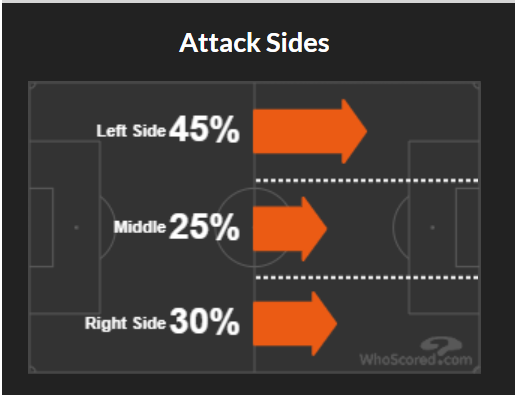
No team in MLS favors one side of the field as frequently as Orlando City’s 45% on the left side, and it is interesting that it is so high down the left because Facundo Torres, generally regarded as the squad’s most creative and dangerous player, plays most frequently on the right side of the field. I think there are three primary reasons for the left side favoritism:
- Iván Angulo is one of the fastest players in MLS and spends most of his time on the left side of the field, so the team tries to get him into space so he can use that speed to get the defense on its heels.
- Orlando City has three left-footed players who love a cross so much I am surprised they play for Orlando City and not Vatican City. Rafael Santos averages 5.1 crosses per 90 mins (27th in MLS), Nico Lodeiro averages 5.6 (16th), and Martín Ojeda averages 9.61 (second). Ojeda has been playing more centrally recently, but he still drifts to the left frequently. Lodeiro does the same, and Santos nearly exclusively stays on the left side. All three of them are crossing machines.
- Torres loves to cut back into the middle from his normal slot on the right side of the field, and so crossing it from left to right gives him space to operate, as the defense has to recover on a switch of field, and a scrambling defense against a talented attacking player is advantageous for Orlando City. Torres is fifth in MLS in receiving passes from 10+ yards away in the offensive area of the field, and his per-90-minute average for those receptions has increased from 2022 (8.4) to 2023 (9.8) to 2024 (11.4). Additionally, here is Facu’s shot chart for the year, courtesy of fotmob.com, and you can see that of his seven non-penalty-kick goals, all of them come from the right half of the field (his most recent goal against New England is highlighted with the red circle, because after a few minutes I gave up on trying to figure out how to show this without having one highlighted):
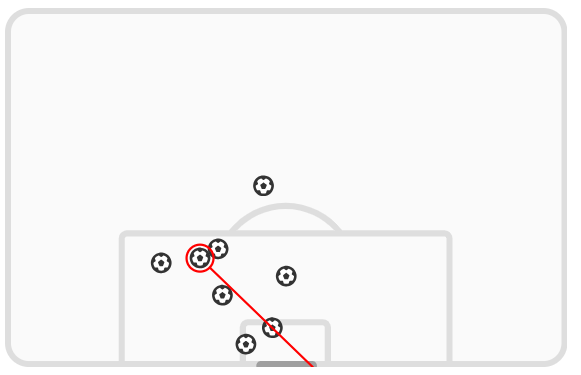
Expanding a little bit off of the direction of play, but returning to the second item in the list above, Orlando City leads all of MLS with an average of 21.32 crosses per 90 minutes. The other 28 MLS teams average 16.6 crosses per 90 minutes, so Orlando City is crossing the ball 28% more frequently than the average MLS team. The Lions have a physical presence in Duncan McGuire in the middle, so this makes sense to target him with crosses into the 18, and in fact the team is fourth in MLS this season with an average of 2.4 completed crosses into the penalty areas per 90 minutes.
It is not just Duncan though, of the 36 goals Orlando City players have scored this season (the other three are own goals), nine of them have come on a header and by eight different players. That 25% of goals scored on a header is the highest percentage for any Orlando City team in fbref.com’s tracking (goes back to 2018) and ranks the team only behind Austin FC’s 29% in MLS this season.
All crosses do not necessarily end in headers, but nearly all headers come from crosses, and the irony of the fact that Orlando City is scoring a high percentage of its goals from headers is that the Lions rank, to use a technical term, DFL in the league in percentage of aerial balls won (40.1%, and the next lowest is 45.4%). It’s kind of like the tagline to those Most Interesting Man in the World beer commercials from Dos Equis — the Lions don’t often win aerial balls, but when they do, they score goals.
Flipping from balls in the air to balls that are generally played on the ground, according to the data tracked by Opta on fbref.com, Orlando City is seventh in MLS in completed through balls per 90 minutes with an average of 1.5. The Lions have been in the top third of MLS in four of the last five seasons in this statistic, as this is clearly a staple of an Óscar Pareja-coached squad.
If you look at the individual MLS players who are leading the league in completing these dangerous balls, it is a veritable who’s who of creative players across the league. Say what you will about Luis Muriel, and I wrote a whole article about him a few weeks ago, but his passing ability is excellent, and it did not surprise me at all to see him high on this list and among the other well-known names. Here are the top 15, which also includes Lodeiro, among players who have played at least 500 minutes:
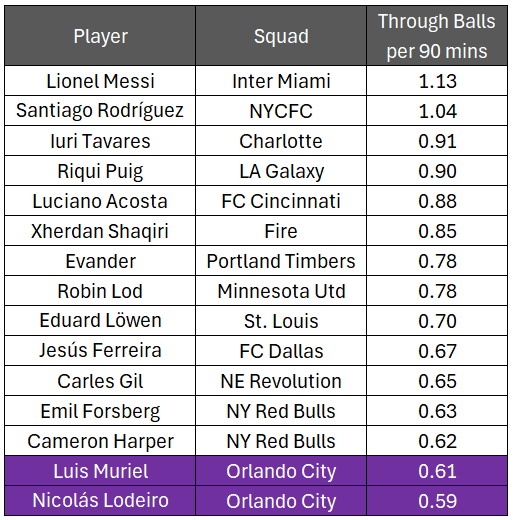
I touched on the left side focus earlier and how Angulo’s speed plays a large role in why the team plays more frequently down the left side, and that comes into play here as well with Orlando City’s predilection for playing through balls. It is also now time for Dagur Dan Thórhallsson to enter the chat, because he is just as much of a through ball target as Ruan was for several years in making speed runs up the right side of the field, and he ranks 24th among defenders in goal-creating actions per 90 minutes (0.24). Coincidentally, he also ranks 24th in shot-creating actions per 90 minutes (2.0). McGuire is also a target for these through balls as he makes excellent shallow runs behind defenders to then run onto balls played in front of him, and Ramiro Enrique is also pacey enough to do the same.
The completed crosses and through balls, as well as the fact that Orlando City is in the top 10 in total completed passes per 90 minutes, contribute to the team leading MLS with 10.1 completed passes into the penalty area per 90 minutes. The rest of MLS averages only 8.4, so Orlando City’s offensive tactics puts the team 20% higher than the rest of the league in terms of its frequency of completing passes to teammates inside the box.
Now, what teams want are goals, not completed passes into the penalty area, but you can see what the Lions are trying to do offensively by looking what these numbers reveal about how they are directing their attacking play.
Orlando City has a burner on the left (Angulo) and also several left-footed players who have the ability to whip in a dangerous cross (Ojeda, Lodeiro, Santos), so the focus is more on going down the left than the middle or the right. The Lions do have a fullback (Thórhallsson) with pace on the right too, so he is a target when they go right, and as a former midfielder, he has the ability to create offense coming forward, so he does with great frequency. The best finisher (Torres) is out on the right but loves to cut back to his left, and this year there is a higher focus on getting him the ball in space as opposed to having him leading the buildup.
Three players (Ojeda, Lodeiro, Muriel) are sharing the 10 role and releasing through balls to the outside and inside threats, and McGuire and Enrique are essentially serving as soccer versions of a basketball rim runner, attacking the goalmouth and trying to score in any way possible.
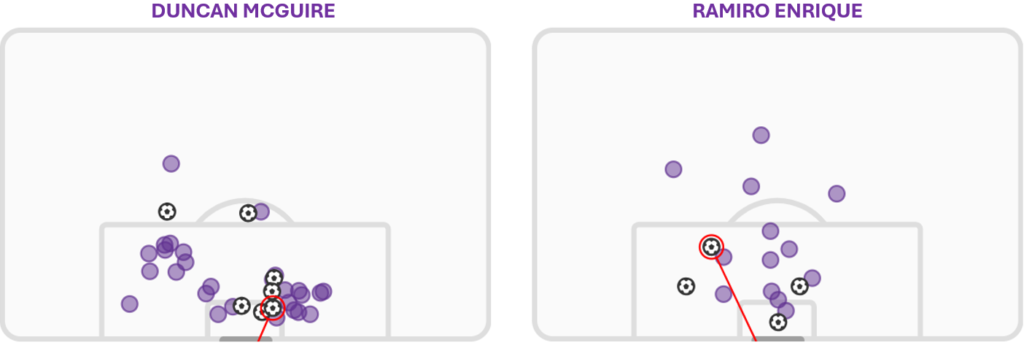
It all sounds great on paper, but for much of the season the offense was sputtering — so much so that Orlando City has scored more goals in the last seven games (20, 2.9 goals per game) than it did in its first 18 games (19, 1.1 goals per game). The first half of the season contained several issues that I believe contributed heavily to the low goal-scoring output, with several injuries, games missed for international duty, and competing in Concacaf Champions Cup at the same time as the start of the regular season, forcing squad rotation and players playing outside of their normal positions.
There was also just some poor play during those early months as well, some self-inflicted poor performances. I believe that Orlando City has found something though in the last few weeks, and while the Lions may not score 2.9 goals per game for the rest of the season, I think that what we have seen recently is a settled team of players who know their roles and understand the strategy, and who have the ability to execute that strategy.
Just 17 years after it was released, Jay-Z’s The Blueprint was selected by the Library of Congress for preservation in the United States National Recording Registry for being “culturally, historically, or aesthetically significant.” Let’s hope that 17 years from now, in 2041, we are all looking back fondly on what became an athletically significant 2024 season for Orlando City.
-
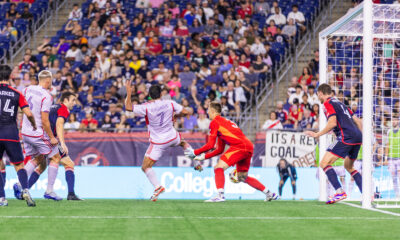
 Orlando City2 weeks ago
Orlando City2 weeks agoOrlando City vs. New England Revolution: Final Score 3-1 as Lions Finally Win at Gillette Stadium
-

 Orlando City2 weeks ago
Orlando City2 weeks agoOrlando City vs. New England Revolution: Player Grades and Man of the Match
-

 Orlando City2 weeks ago
Orlando City2 weeks agoOrlando City vs. New England Revolution: Five Takeaways
-
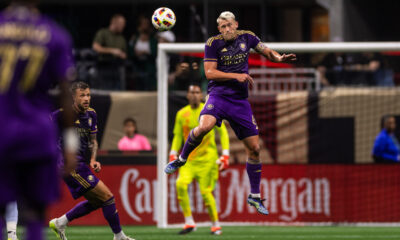
 Orlando City2 weeks ago
Orlando City2 weeks agoHow Should We Make Sense of Orlando City’s Defense in 2024?
-
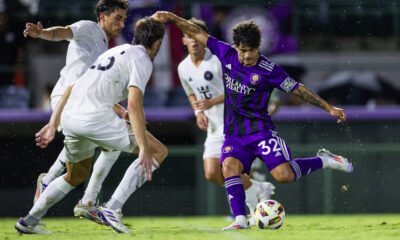
 Orlando City B2 weeks ago
Orlando City B2 weeks agoOrlando City B vs. Inter Miami II: Final Score 1-1 as OCB Draws Rivals and Claims a Second Point in Penalties
-
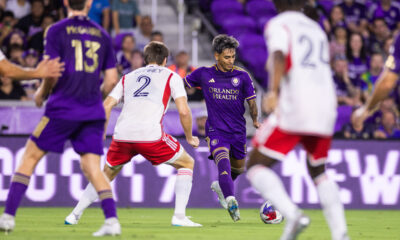
 Orlando City2 weeks ago
Orlando City2 weeks agoIntelligence Report: Orlando City vs. New England Revolution
-
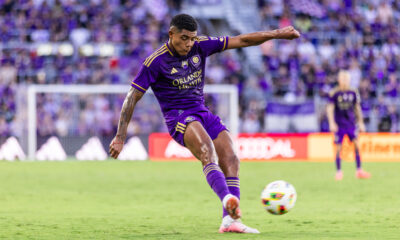
 Podcasts2 weeks ago
Podcasts2 weeks agoPawedCast Episode 432: New England Preview, OCB Set to Host Inter Miami II, and More
-

 Orlando City2 weeks ago
Orlando City2 weeks agoOrlando City at New England Revolution: Three Keys to Victory


